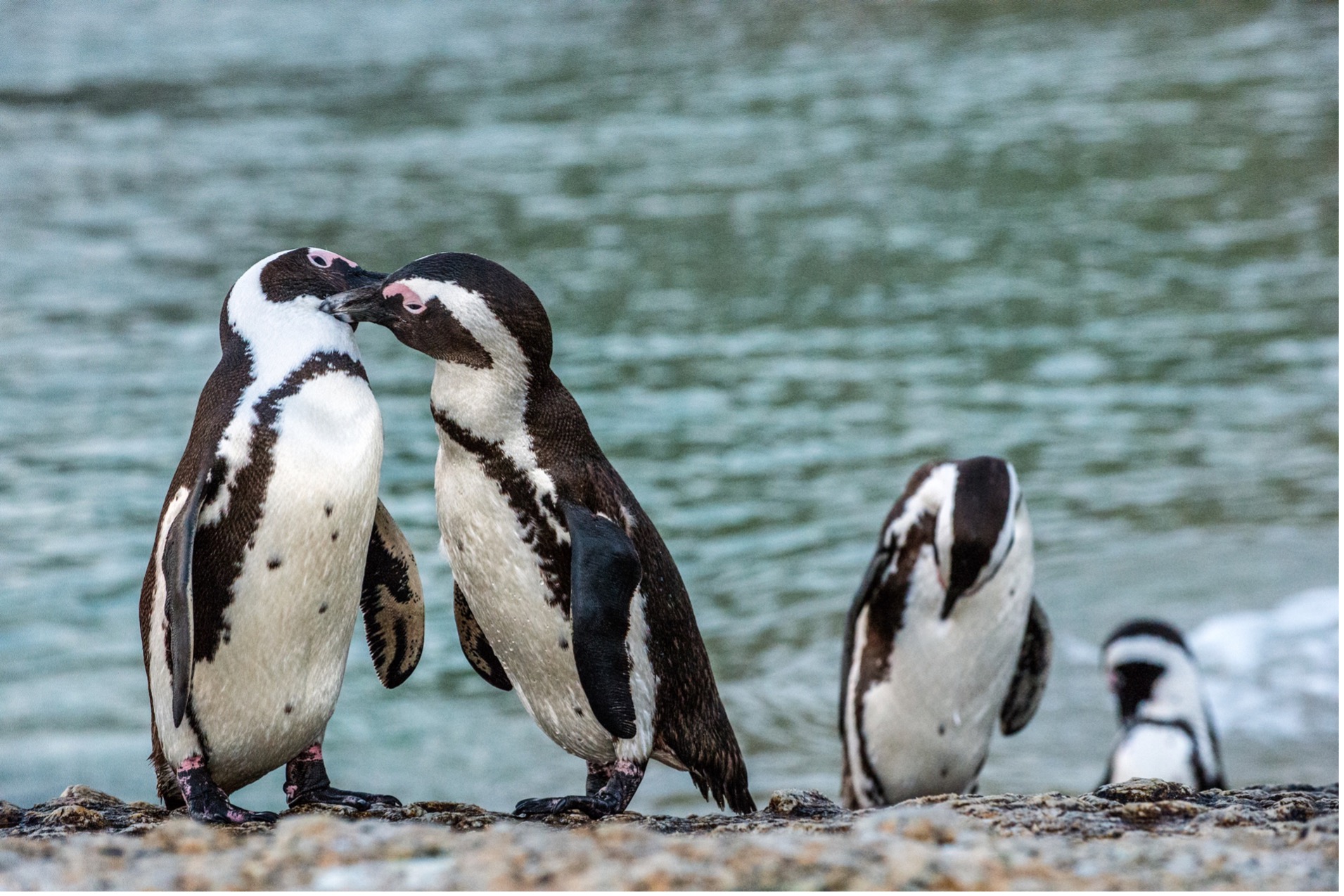A recent study published in the African Journal of Marine Science explores the impact of climate change on African penguins over the past 22,000 years, shedding light on the historical habitat of these climate change survivors, and revealing insights that could aid in the conservation of this endangered species.
 Mating dance and singing of a couple of African penguins during mating season.
Mating dance and singing of a couple of African penguins during mating season.
The African penguins, known by various names such as the black-footed penguin, the Cape penguin, or the Jackass penguin, earned their nickname not due to their personality but because of their braying, donkey-like call. They once thrived on 15 large islands along the southern coast of Africa during the Last Glacial Maximum (about 29,000 to 19,000 years ago). However, as the Earth warmed and the ice sheets melted, the rising sea levels resulted in the submergence of these islands. Over a period of 22,000 years, the suitable nesting habitat for penguin colonies decreased dramatically, reducing tenfold.
To reconstruct the penguins' historical habitat, researchers utilized topographical maps of the ocean floor, identifying potential former islands submerged below current sea levels. By considering the rate of sea level rise, they estimated that there could have been 220 suitable nesting spots for penguins.
In contrast, the modern-day islands that support penguin populations are much smaller. The study indicates that the changing habitat availability, combined with human pressures such as climate change, habitat destruction, and food competition, have significantly impacted penguin populations.
The African penguin population experienced a sharp decline, with the number of breeding pairs dropping to 21,000 by 2011 and further declining to 13,600 by 2019. Currently, only seven breeding colonies support approximately 97 percent of the penguin population in South Africa.
Penguins' adaptation to the current environment, despite the loss in numbers, has a lot to do with their evolution, which has been thoroughly studied in previous research.
Last year, an international team co-led by BGI-Research made significant advancements in understanding how certain land animals made the transition back to aquatic environments, particularly in frigid regions like Antarctica. This breakthrough study, published in Nature Communications, was part of the Bird Genome 10K (B10K) project, an international research initiative that aims to sequence the genomes of all existing bird species.
By analyzing the genomes of living and recently extinct penguin species, as well as the morphology of long-extinct ones, researchers reconstructed over 60 million years of evolutionary history, shedding light on the specialized seabirds' aquatic ecology and population patterns.
A crucial discovery from the study indicates that global cooling and major ocean currents played essential roles in driving penguin diversification and shaping their biogeographic patterns. The genomes revealed signs of population changes and interbreeding between closely related penguin species, consistent with periods of contraction to refugia (locations which support an isolated or relict population of a once more widespread species) and subsequent expansion to recolonize landmasses throughout the Southern Ocean, in response to fluctuating global climates.
Surprisingly, the study revealed that penguins, along with their sister group Procellariiformes (an order of seabirds comprising albatrosses and petrels), which includes albatrosses and petrels, exhibit the slowest evolutionary rates among birds. This finding suggests that their gradual shift towards an increasingly aquatic lifestyle might be linked to this slowdown.
Additionally, the study found a negative correlation between evolutionary rates and environmental temperature in penguins. For example, the emperor penguin, which breeds during the harsh Antarctic winter, showed the highest evolutionary rate among all extant penguin species, followed by other high latitude penguin species.
Research on penguins reveals the remarkable journey of this ancient animal leading up to its present existence. It demonstrates how penguins not only endured the forces of natural selection, transitioning from terrestrial to marine birds and triumphing in colonizing some of the most challenging environments on Earth, but also managed to survive human-induced pressures including climate change. These findings offer crucial insights that can guide the conservation efforts for this beloved species and contribute to safeguarding global biodiversity as a whole.
Source:
Popular Science: How African penguins continue to survive changes in climate
https://www.popsci.com/environment/how-african-penguins-continue-to-survive-climate-changes/
African Journal of Marine Science: A natural terminal Pleistocene decline of African penguin populations enhances their anthropogenic extinction risk
https://www.tandfonline.com/doi/abs/10.2989/1814232X.2023.2171126
Nature Communications: Genomic insights into the secondary aquatic transition of penguins
https://www.nature.com/articles/s41467-022-31508-9



